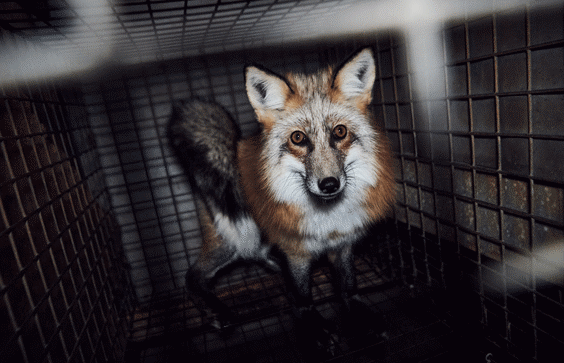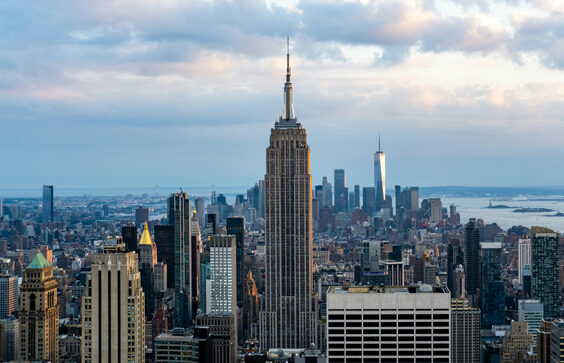From Europe to North America, discover projects demonstrating why the restoration movement is gaining momentum – despite strong opposition.
As industrialization and large-scale agriculture took off, forward-looking individuals and politicians saw the need to protect small pockets of the natural world from its ravages – lest they be lost forever. The first national parks began to appear in the mid-19th century, such as Yellowstone National Park (US, 1872), Banff National Park (Canada, 1885), and Sarek National Park (Sweden, 1909). After over a century, this “conservation movement” has helped protect roughly 17% of Earth’s land and 8% of its oceans (UNEP Protected Planet Report 2024).
Today, a new movement is gaining ground that sets its sights on areas already degraded by human activity. Its goal? Restoration.
What is restoration? Clarifying the terms
The Society for Ecological Restoration defines restoration as “the process of assisting the recovery of a native ecosystem that has been degraded, damaged, or destroyed.” In other words, in contrast to conservation, restoration implies intentional human intervention.
But at the same time, restoration is not to be confused with Ecosystem Rehabilitation or Engineering projects like the Great Green Wall of China, which attempt to alter one ecosystem (e.g. desert) into another one (e.g. forest). Sometimes restoration and “rewilding” are also used interchangeably. As rewilding deals with the re-introduction of missing native species in the interests of biodiversity, it is best seen as one method within the larger restoration toolbox.
Restoration surges – and meets backlash
Definitions aside, restoration is proving to be a popular, global rallying cry for environmentalists attracted to the idea of actually improving the planet rather than simply doing less harm. We are currently in the midst of the UN Decade of Restoration (2021 – 2030), for example, where countries have pledged to restore 1 billion hectares. Similarly, the EU Biodiversity Strategy for 2030 has set a target for restoring 20% of the bloc’s land area and 20% of its seas by 2030.
These are bold targets to be sure, which is why restoration is also a lightning rod to some landowners and special interest groups who argue these plans are too costly, too restrictive, and bound to fail.
But while progress may be slow, one thing can be sure: Restoration is already well underway.
Restoration & rewilding success stories
Below are 10 restoration case studies from Europe and North America that restoring nature is not just good for biodiversity, but for restoring the ecosystem services upon which our human communities depend.

Credit: Thomas Bonometti
1. Yellowstone: apex predator reintroduction transforms ecosystem
The 1995 reintroduction of wolves to Yellowstone is one of the most recognized restoration successes worldwide. Without apex predators, elk had overgrazed forests and riparian zones, degrading habitats in the process. Wolves were brought in from Canada, and in turn triggered a “trophic cascade”: elk populations leveled off, vegetation rebounded, beavers returned, rivers stabilized, and bird populations increased. The revitalized landscape now supports rich biodiversity and helps drive tourism, showcasing the far-reaching ecological value of restoring previously undesirable top predators to the food chain.
2. Everglades: restoring natural flood defenses in a hurricane-prone region
The Everglades once buffered south Florida from floods and storm surges, but over the years much had been drained and segmented by canals and levees. The 2000 restoration plan sought to reconnect water flows, remove barriers, and rebuild wetlands. The result has improved flood control and water quality, while supporting wildlife and protecting communities at the same time. Increasingly native habitats now offer resilience against hurricanes while enabling recreation and improved drinking water security.
3. Great Lakes: from toxic waste sites to thriving waterfront communities
Once home to dozens of heavily polluted “Areas of Concern,” the U.S. – Canada Great Lakes region has seen significant transformation. Cleanups under the Great Lakes Restoration Initiative have removed toxic sediment, restored fish habitats, and revitalized shorelines. Sites like Muskegon Lake now show measurable ecological and economic benefits, with higher property values, improved water quality, and booming recreation as a result.
4. Denmark’s Skjern River: restoring wetlands with public and political support
The Skjern River, once straightened for farming, faced degraded soils and crop yields, pollution, and biodiversity loss. A government-backed project sought to re-meander the river and has since returned 2,200 hectares to marshland. Water quality improved, wildlife returned, and the area now attracts up to 400,000 visitors a year. Strong public support and inclusive planning were considered key to its success, and a cost-benefit analysis showed that the economic opportunities created by the restoration project exceeded its costs.

Credit: Unsplash
5. Netherlands dunes: protecting coastlines by restoring dynamic dune habitats
Dutch dunes are critical for coastal defense, groundwater purification, and rare species. Decades of vegetation fixation and nitrogen buildup, however, had weakened their function. Restoration in several Natura 2000 dune complexes therefore set out to remove invasive plants, open forests, and reactivate natural sand movement. These efforts have since strengthened coastal resilience while restoring unique habitats like grey dunes and humid dune slacks, enhancing not just coastal integrity but biodiversity and recreation as well.
6. Ireland’s peatlands: a national economic case for bog restoration
Historically, Ireland’s peatlands were drained and cut for turf, agriculture and forestry from the mid 20th century onward, degrading hydrology, reducing biodiversity and releasing large volumes of stored carbon. Beginning in 2016, the EU funded “Living Bog” project sought to turn this around, restoring 3,000 hectares by blocking drains and removing scrub. The broader “Peatlands and People” programme now scales restoration nationally. Restored wetlands again act as carbon sinks, support rare species, buffer floods and supply clean water.
7. European dam removals: massive-scale effort reconnects 4,000 km of rivers
For decades, Europe’s rivers were fragmented by dams built for hydropower, navigation, or irrigation – many of which are now obsolete. Since 2020, dam removals have surged, with a record 487 barriers removed in 2023 alone, helping restore over 4,300 km of river habitat. This effort represents a major shift in river management, and has improved water quality, reconnected spawning routes for fish, revived sediment flows and helped enhance flood protection and recreational use.

Credit: Benjamin Jones
8. Posidonia beds in Spain: carbon-storing seagrass meadows making a comeback
Mediterranean seagrass meadows store around half a million tonnes of carbon annually, while providing essential fish habitat. In Andalusia, 90% of Posidonia oceanica beds are now protected, and restoration through transplanting lab-grown seagrass shows high survival rates. These efforts are already helping reverse further degradation, enhance marine biodiversity, and bolster climate resilience through long-term carbon removal.

Credit: Anne Nygard
9. Finland’s forests: voluntary forest conservation leads to national-scale success
Most natural forests in southern and western Finland have long-since been converted to commercial use, thus losing key ecological functions. A 2003 EU project sought to help restore forest diversity. Featuring a unique voluntary model, landowners can receive full compensation to conserve their forests, and the approach now channels €30 million annually. Its popularity helped inspire a broader program, which expands biodiversity restoration to include other landscapes.
10. Portugal’s cork oak forests: paying farmers to restore ecosystem services
Southern Portugal’s cork oak landscapes are biodiversity-rich systems that store carbon, filter water, and reduce wildfire risk. Mismanagement, Eucalyptus plantations, and abandonment had degraded large areas. But in 2011, WWF launched the Green Heart of Cork project, restoring forests in partnership with local farmers. Through EU agri-environment schemes and Rural Development Funds, farmers now receive a dedicated Payment for Ecosystem Services to support sustainable practices, turning conservation into a viable livelihood and restoring key ecosystem functions.
Lead Image: Florida Everglades (Credit: iStock)















Sorry, the comment form is closed at this time.